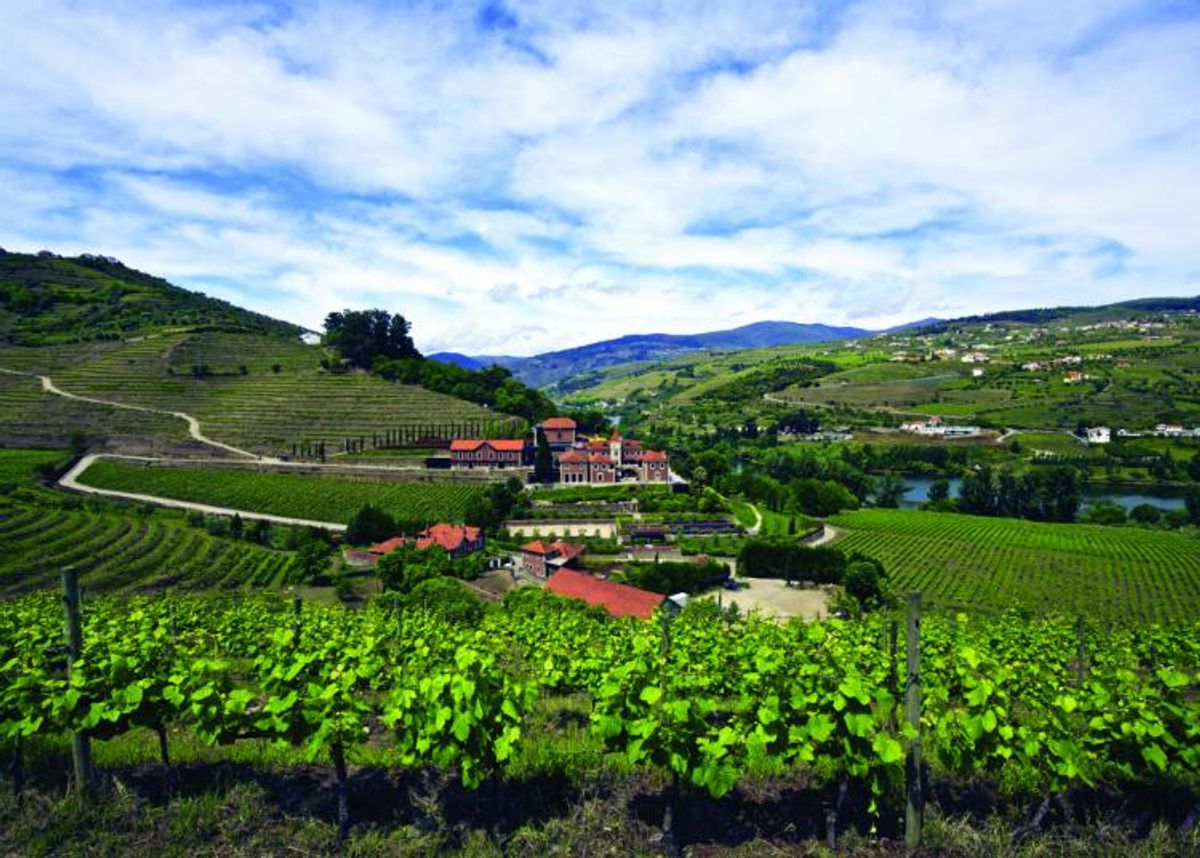Non-topics
Escape Plan: Portugal
Escape Plan: Portugal

Indulge in two of Europe’s most charismatic wine regions.
April 28 2016 11:46 AM EST
May 26 2023 1:20 PM EST
By continuing to use our site, you agree to our Private Policy and Terms of Use.
Escape Plan: Portugal

Indulge in two of Europe’s most charismatic wine regions.
When the haze of summer heat subsides and the swell of tourists follows suit, Portugal becomes poised for exploration in the early autumn.
Lisbon feels like a natural entry point into a country of surprisingly manageable size—even the capital is perfectly walkable from tip to tail, with vibrant neighborhoods that mash up Moorish-, Pombaline-, and communist-style architecture.
Hit the vibrant side streets of the Bairro Alto district for small, friendly bars and our favorite place to call home, the Late Birds. A stylish B&B set in a stunningly refurbished townhouse, the all-male inn pulls out all the stops to make travelers feel like they’re staying with old friends: affable staff (headed by owner Carlos), homemade breakfasts (served all day), ample lounging space filled with glossy art books, and an inviting plunge pool hidden in the back garden.
East of Lisbon, the region of Alentejo yawns across the horizon all the way to the Spanish border. While it’s often considered the breadbasket of Portugal, there’s a thirsty quality to the landscape “beyond the Tagus (Tejo) River.” Rusty wheat sprouts up like comb bristles, and shade is sparsely cast by sobreiro cork trees. A strong push for preservation has maintained the historical integrity of several medieval townships, but these days the region’s popularity is sharply on the rise because of its thriving wineries.
Wine tourism has created an unofficial network of hotels and restaurants dedicated to promoting the local bounty. And although much of it can be discovered on a day trip from the capital, Alentejo is better savored slowly, like the wine itself.
Évora, with its Roman ruins in the middle of town, feels like
a natural center of gravity for the area; its streets are protected under a UNESCO mandate.
In the nearby village of Montemor-o-Novo, is L’AND, a sprawling vineyard with a series of small villas fashioned in a variety of white geometric shapes. The atmosphere is thoroughly contemporary—even severe—with a striking lobby, a restaurant, and a super-cool spa housed in a centerpiece structure that looks like a midcentury-modern space station. The upmarket retreat has garnered accolades in recent years, including membership in the Small Luxury Hotels of the World, and a Michelin star for its inventive dinner courses served under hundreds of suspended lamps.
Also in Évora’s orbit is the Dona Maria vineyard. Named for the lover of a king who bequeathed the generous portion of land to her, the estate does an admirable job of showcasing the region’s authentic bounty. The purveyors live in the refurbished palace (don’t miss a look at the chapel) and offer small sit-down lunches for eager guests, complete with bone china and polished candelabras. More informal tastings are available for those without the luxury of time to fully indulge in Alentejo’s bygone aristocratic elegance. Make sure not to leave without a handful of bottles, offered at wholesale prices. The wine is so popular that it’s even served on TAP, Portugal’s national airline and a carrier of choice for those seeking easy across-the-pond jaunts.
Before going back to Lisbon, it’s worth stopping at the Alentejo Marmòris Hotel and Spa for something very different. Developed by a marble magnate (the coveted stone is quarried just down the road), the hotel in the adorable village of Vila Viçosa is like some kind of bizarre shrine to the gods of limestone. Swirls of pink, brown, and yellow marble encase most of the public spaces—primed for the nouveau riche—but it’s the five-star spa and excellent on-site restaurant that attract a more discerning clientele.
The arid Alentejo region starkly contrasts with the Douro, Portugal’s classic wine region farther north. The steps of the Douro, hemmed by its namesake river, are like a grand staircase leading up to the celestial Spanish plateau just beyond. The farther one travels inland, the more one learns about the valley’s secrets: hidden monasteries, gilded cathedrals, terraced farming estates, and the world-famous port carried down from the mountaintops and stored at sea level in Porto at the mouth of the river.
Often referred to as the “Tuscany of 20 years ago,” the Douro is inhabited by salt-of-the-earth people who take as much pride in the stunning natural setting as they do in their local harvest. And it’s here, around 90 minutes inland from Porto, that travelers can find the country’s newest luxury stay, Six Senses Douro Valley, perched on a small hilltop near the village of Lamego.
A hallmark of opulence and wellness for over a decade in the Asian market, Six Senses is making inroads in other continents and learning how to transcribe its purity and relaxation in new destinations. And while the quiet recesses of the Douro may outwardly seem like a puzzling first punch at the European hospitality market, it actually fits quite organically with the brand’s international aspirations.
Championing the swirl of luxury and locality, the hotel has harnessed the region’s natural affinity for everything homegrown, and created an elevated version of the theme: massages infuse local owers and minerals (you can even take a class in making your own emulsions), nightly wine tastings come from vintages blended down the road, delicious traditional stews and fish dishes are served in local crockery, forest walks tangle through the vineyards, and kayak trips glide along the eponymous river below.
Want more breaking equality news & trending entertainment stories?
Check out our NEW 24/7 streaming service: the Advocate Channel!
Download the Advocate Channel App for your mobile phone and your favorite streaming device!